September Revolution: 52 a year ago in the “hot spot” of the Arabian Peninsula overthrew the monarchy
The kingdom of imam zaiditov
On the eve of the revolution, Yemen was one of the most socially and economically backward countries in the Middle East. This is the oldest state of the Arabian Peninsula, story which goes back thousands of years, was a stronghold of the original South Arabian culture, combining local components with a noticeable Jewish, Persian, and Ethiopian influence. In 628 AD Yemen has undergone Arab conquest and Islamization of a large part of its population. Over the next centuries, the power in Yemen passed from one sultan dynasty to another, Yemen also managed to be a vassal of Egypt, while in 1538 it was not conquered for the first time by the Ottoman Turks. Yemen entered the Ottoman Empire twice - for the first time from 1538 to 1632, then from 1872 to 1918. In the interval between the periods of Ottoman rule, power in the territory of North Yemen belonged to the imam of Sana, the head of the Zeidite Muslims, who combined spiritual and secular power. Imam headed Yemen in 1918, when, after the collapse of the Ottoman Empire following the First World War, the country proclaimed state sovereignty.
Briefly about who such zaydity. The current population of Yemen is 25, 5 million. Practically all the inhabitants of the country belong to different groups of the Arab population - these are nomadic Bedouins, citizens with many different kinds of blood, Afro-Arab mulattoes, and Arabized descendants of Ethiopian immigrants. Naturally, almost the entire population of the country is represented by Muslims (almost all Jews emigrated to Israel in the middle - second half of the twentieth century). However, the Muslim population is almost equally divided between Sunnis (52%) and Shiites (46%). Yemeni Shiites and called Zaidite. Zeidism, one of the earliest Shiite sects, dates back to the 8th century AD. and received the name of Imam Zeyd ibn Ali, who led one of the uprisings against the caliphs of the Umayyad dynasty.
Although Zeid ibn Ali himself died in battle as early as 740 AD, and his opponents crucified his body on the cross, the followers of Zeid set themselves the task of creating their own state, headed by the imam of the Alids, descendants of Imam Ali. . Zaydites differ from other Shiites by being close to the Sunni doctrine, in particular, they do not recognize such Shiite dogmas as the doctrine of the “hidden” imam (“mahdi”), of the prudent concealment of faith in critical situations (“takiyya”), of the unconditional predetermination of human destiny. Established in the early Middle Ages on the territory of North Yemen, the Zeidites made their dreams come true - they created a theocratic state headed by an imam, who, with interruptions to war and occupation, continued to exist until the 1962 year.
When the Ottoman Empire was defeated in World War I in 1918, Sheikh Abdullah al-SallalHamid al-Din (1867-1948), the imam of Zeidites, proclaimed himself king of sovereign Yemen. In 1919, he finally broke off vassal relations with Turkey, and in 1920, the country received the official name of the Yemeni Mutawakkilian kingdom, under which it existed before 1962. The new state did not encounter any special problems on the path of international recognition. In 1926, it entered into a treaty with Italy, which at that time claimed a leading role in Northeast Africa and the Red Sea basin, and was interested in cooperation with the nearest overseas neighbor of its African colony, Eritrea. In 1928, a friendship and trade treaty was concluded with the Soviet Union.
However, despite the development of international relations and the gradual transition to modernizing the economy, Yemen in general, during the reign of the imam and his heirs, remained an extremely backward feudal state. The social system in it has not changed much since the Middle Ages, all power belonged to the king, he is the imam. At the same time, behind the back of Imam Yahya, there was a struggle between the opposing clans — representatives of the ruling Hamiddin family and rivals from the Al-Wazir family.
In February 1948, the eighty-year-old Imam Yahya - the founder of an independent Yemeni state - was killed by conspirators. This led to the aggravation of the internecine struggle of the Yemeni feudal lords. A group of officers relying on the cadets of the military school in the capital of Yemen, Sana'a, proclaimed the representative of the clan al-Vazirov Abdullah to be the king. The remaining heir of Yahya, Emir Ahmed bin Yahya (1891-1962), enlisted the support of the Zidid tribes of the northern provinces, where the Khamidadins enjoyed unquestioned authority, as well as supported by the monarchs of Saudi Arabia, Egypt and Jordan, already 14 March X.XXXX King Abdullah. The latter was executed, like many of his supporters, and Ahmed Bin Yahya became the sole ruler of Yemen. The coming to power of Ahmed bin Yahya coincided with the onset of revolutionary ferment in many states of the Middle East. Therefore, the imam considered the strengthening of the Yemeni army and police one of the main tasks of his activities. At the same time, he tried to maintain good relations with the socialist countries, including the Soviet Union, apparently considering this as a kind of "antidote" for the possible support of the opposition socialist countries inside Yemen.
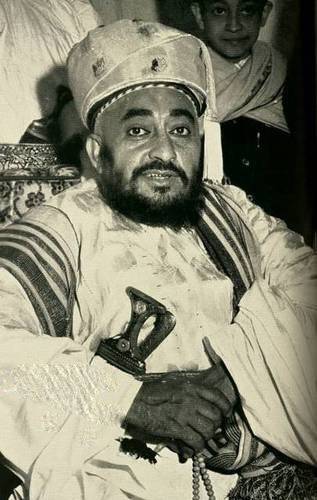 At the same time, hectic times dictated their conditions. Among the Yemeni officer corps, especially among junior officers, there was growing discontent with the country's retrograde social system, Ahmad bin Yahya’s authoritarian management methods, and the lack of career advancement opportunities under the domination of the Hamidadinov dynasty. On top of that, after the revolution in Egypt, which overthrew King Farouk, in Yemen, which is closely linked to cultural relations with its overseas neighbor, ideas of secular Arab nationalism began to spread. At first, Ahmed Bin Yahya maintained allied relations with Egyptian President Gamal Abdel Nasser, regarding him as a natural ally in confronting Saudi Arabia’s neighbors and the British protectorate of Aden. However, when relations between the Yemeni king and the Egyptian president began to deteriorate rapidly, Egypt, which had a great influence in the region, began a systematic anti-German propaganda. First of all, the propaganda was directed to the progressive layers of Yemeni society - the intelligentsia, junior officers - dissatisfied with the policies of the Imam, who restricted the full development of the state.
At the same time, hectic times dictated their conditions. Among the Yemeni officer corps, especially among junior officers, there was growing discontent with the country's retrograde social system, Ahmad bin Yahya’s authoritarian management methods, and the lack of career advancement opportunities under the domination of the Hamidadinov dynasty. On top of that, after the revolution in Egypt, which overthrew King Farouk, in Yemen, which is closely linked to cultural relations with its overseas neighbor, ideas of secular Arab nationalism began to spread. At first, Ahmed Bin Yahya maintained allied relations with Egyptian President Gamal Abdel Nasser, regarding him as a natural ally in confronting Saudi Arabia’s neighbors and the British protectorate of Aden. However, when relations between the Yemeni king and the Egyptian president began to deteriorate rapidly, Egypt, which had a great influence in the region, began a systematic anti-German propaganda. First of all, the propaganda was directed to the progressive layers of Yemeni society - the intelligentsia, junior officers - dissatisfied with the policies of the Imam, who restricted the full development of the state. Since the second half of the 1950's. branches of Arab leftist-nationalist organizations, including the Arab Socialist Renaissance Party (BAAS) and the Arab Nationalist Movement (DAN), operated in the territory of Yemen. The rupture of relations between Imam Ahmed bin Yahya and Gamal Abdel Nasser led to the emergence in Yemen of the secret organization “Free Officers”, which united army officers, primarily lieutenants and captains of the Yemeni army. The organization’s goal was to overthrow the theocratic monarchy in Yemen and create a secular Arab state with a political regime close to the Egyptian one in ideology and social structure.
By the time of the events described, the king-imam Ahmed bin Yahya was already a very sick man. Despite his relatively stale age (seventy years), he increasingly suffered from senile marasmus and showed inappropriate behavior. In particular, the imam was not going to carry out any reforms capable of at least partially modernizing the social system of Yemen. He even removed his own son Muhammad al-Badr from government, because the heir to the throne, realizing the gravity of the situation, advocated partial reforms in the country. After all, Yemen, despite the fact that 1960s had already arrived in the world, existed in the rhythm of a medieval state. Slavery, the institution of hostage, harems, corporal punishment and injury for crimes were officially existed in the country.
Vadim Alekseevich Kirpichenko - Lieutenant-General, a veteran of Soviet foreign intelligence - described the appearance and behavior of Imam Ahmed Bin Yahya: “He sat on a high gilded throne. Instead of a crown on his head, a fez rose — tarbush — also gilded. The imam was dressed in a white burnous, with a traditional dagger - jambia - on a wide gilded belt. Most likely, both the jewelry on the belt and the dagger's sheath were of pure gold ... All these attributes of royal grandeur were of Yemeni origin, and only slippers without backs, worn on the imam’s bare feet, were made by Batya, and they reminded that somewhere far away there is another, civilized world. The imam's eyes were very bulging (based disease), his jaw dropped (something nervous), and it was simply impossible to understand his speech ”(Kirpichenko V. A. Intelligence: Persons and Persons. M .: Geya, 1998).
The revolution of "free officers"
In March, 1961, the imam was seriously injured during the assassination, and on September 18, 1962, died after a long illness. Thirty-six-year-old prince Muhammad al-Badr bin Ahmed (1926-1996), the eldest son of Ahmed bin Yahya, who at various times held ministerial posts in the Yemeni government, was to succeed to the throne. After the death of his father, he was proclaimed king of Yemen, but his rule lasted only a week. 26 September 1962, there was a military coup that went down in history as the September Revolution. The revolutionary command council, led by captains Abdullah Juseilan, Abd al-Latif Dayfalla, lieutenant Ali Abd al-Mughni, came to power in the country. The decisive role was played by the fact that Colonel Abdullah Al-Salal joined the conspirators, shortly before the coup, on September 19, appointed by the Chief of General Staff of the Yemeni Army.
Before being appointed Chief of the General Staff, Colonel Abdullah Al-Salal (1917-1994), he served in the Yemeni armed forces for a long time. He was born in the family of a merchant, received a military education in Iraq, from where he arrived in 1939 with lieutenant shoulder straps and began serving in the Yemeni army. After the murder of Imam Yahya in 1948, he was arrested for taking part in a coup and spent seven years in prison. Later, al-Salyal was pardoned and returned to civil service: he was the governor of Hodeidah province, led the military school in Sana'a and the personal security of Prince Muhammad al-Badr. He who trusted Al-Salal al-Badr decided to appoint him as chief of the general staff, assigning a lieutenant colonel rank.
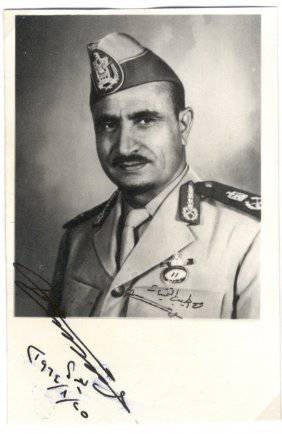 Seven days after the appointment, the former security chief overthrew his boss. The imam's palace was burned down, and more than seventy representatives of the Hamidaddin dynasty, royal ministers and governors were executed on the central square of the Yemeni capital. Two days later, at a meeting of the sheikhs of the Yemeni tribes, Abdullah Al-Salyal declared the overthrow of the Yemeni monarchy as "a shame of the Arab world and of all humanity." Following the overthrow of the monarchy, the revolutionary authorities adopted decrees prohibiting slavery and the institution of hostage. The royal lands were confiscated and transferred to the state. Thus began a new era in the history of Yemen - the first republic in the Arabian Peninsula, which arose as a result of the overthrow of the feudal monarchy.
Seven days after the appointment, the former security chief overthrew his boss. The imam's palace was burned down, and more than seventy representatives of the Hamidaddin dynasty, royal ministers and governors were executed on the central square of the Yemeni capital. Two days later, at a meeting of the sheikhs of the Yemeni tribes, Abdullah Al-Salyal declared the overthrow of the Yemeni monarchy as "a shame of the Arab world and of all humanity." Following the overthrow of the monarchy, the revolutionary authorities adopted decrees prohibiting slavery and the institution of hostage. The royal lands were confiscated and transferred to the state. Thus began a new era in the history of Yemen - the first republic in the Arabian Peninsula, which arose as a result of the overthrow of the feudal monarchy. However, most of the North Yemeni tribes who professed Zaidism and considered Muhammad al-Badr their imam and the legitimate king of Yemen did not agree with the change of power and the overthrow of the entire social system of the country. A powerful uprising against the new authorities broke out, leading to the beginning of the civil war between the Republicans and the royalists, which lasted eight years - from 1962 to 1970.
Egypt played a major role in strengthening the republican regime in Yemen from the very first days of the revolution. September 29 1962, the Egyptian president, recognized the new regime in Yemen. Nasser began sending Egyptian troops to Yemen, knowing full well that without their support, the republican regime would be doomed to defeat — in addition to the Zeidit tribes, the monarchies of the Arabian Peninsula, primarily Saudi Arabia and Jordan, who saw the “Free officers "a dangerous example for their own subjects. A large Egyptian military contingent was deployed to Yemen.
Egyptian advisers began to modernize the Yemeni army, and a unit of 3 paratroopers with thousands of soldiers and officers began to fulfill the role of personal guards at al-Salyal and other leaders of the Yemeni revolution. At the same time, the strengthening of the Yemeni armed forces began - the salaries of the officers were raised, the rank and file began to be retrained intensively, modernizing the training system for military specialties. However, opponents of the republican regime launched an offensive with the support of Saudi Arabia. 5 October 1962, the Saudi air force bombed the city of El Beida in the north of Yemen, and the next day a Saudi army detachment tried to break into Yemen, but was stopped.
The Yemen Arab Republic, now called North Yemen, concluded an agreement with Egypt, according to which a contingent of Egyptian troops was deployed in the country. The Egyptians began to participate in combat operations against the royalist troops. Saudi Arabia and Yemen exchanged mutual threats of air strikes. Soon the United States of America intervened in the situation, extremely worried about the revolution in Yemen and the related danger to American influence in the region. As is known, the United States relied (and continues to rely so far) on the most conservative Arab monarchical regimes of the Middle East - Saudi Arabia, Jordan, the Emirates of the Persian Gulf. Since Saudi Arabia was already considered a strategic ally of the United States in the region at that time, the American command was quick to send a group of warships to the Persian Gulf. She was alarmed by the events in Yemen and Great Britain, which by that time had kept the protectorate over Aden, the sultanates and the emirates of the South Arabian coast.
In Yemen itself, the revolution instantly led to a confrontation that, like everywhere else in the Middle East, turned into religious and ethnic tones. Zeidit tribes of North Yemen recognized as their head Imam Muhammad al-Badr bin Ahmed Hamidaddin, considering him also the legitimate king of Yemen. In turn, the Sunnis, the Shafiites who inhabited the rest of Yemen, almost immediately accepted the September revolution, because they saw in it a long-awaited release from the power of the Zeidite imams. Zeydit - the royalists enjoyed the unconditional support of Saudi Arabia and Jordan, gradually the Shah of Iran began to join the conflict on their side, behind which stood the United States, as well as the Federation of South Arabia, whose policy was determined by the United Kingdom. On the other hand, almost immediately the Yemen Arab Republic was recognized not only by Egypt, but also by Lebanon, Syria, Iraq, Sudan, Algeria and Tunisia. The most important role was also played by the recognition of the YAR by the Soviet Union.
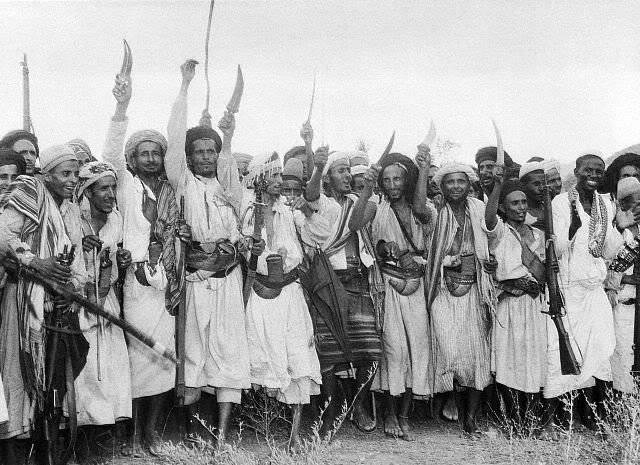
The Egyptian armed forces on the part of the YAR, units of the Saudi mercenaries and armed units of the Federation of Southern Arabia — on the part of the royalists — were directly involved in the civil war in Yemen. Al-Salal appealed for military assistance to Egyptian President Gamal Nasser, who sent an expeditionary military corps of thousands of people to 60 to Yemen. In turn, the Saudi and Iranian secret services and military advisers began training for the armed forces of the Zaydit imam. Iranian intelligence took over the bulk of the work of training subversive groups that fought on the side of the imam - the king, and also transferred weapons, money, provided informational support to the Imam army.
What were the armed forces of both sides by the middle of 1960's. - time of the outbreak of civil war? On the side of Imam Muhammad al-Badr, the militias of Zeidit tribes fought: 100 thousands of armed warriors of the Bakil tribe, 70 thousands of fighters of the Zu Mohammed and Zu Hussein, tens of thousands of fighters of other tribal groups. In addition, on the side of the imam 20 fought thousands of soldiers and officers of the irregular Yemeni troops, 200 000 men of the royal tribe, as well as numerous volunteers and mercenaries from Saudi Arabia and other Persian Gulf monarchies. The YAR armed forces in 1964 had only 3 thousands of soldiers and officers - that is, they were hundreds of times lower than the royal troops in numbers. The situation was saved by the presence in Yemen of the 70-thousand Egyptian military contingent. In addition, the Soviet Union unequivocally sided with the Yemen Arab Republic. A year after independence was proclaimed — in 1963 — in Yemen, there were 547 Soviet military specialists — first and foremost, highly skilled officers with extensive experience.
However, objectively the republican armed forces were much inferior to the royal army. The situation has changed thanks to the famous Six-Day War 1967. Yemen as an ally - the satellite of Egypt declared war on Israel and broke off diplomatic relations with the United States of America. In August, 1967. Egypt and Saudi Arabia reached an agreement on mutual concessions. The Khartoum Treaty included the following points: the withdrawal of Egyptian troops from Yemen; the end of Saudi Arabian royalist support; providing royalists - representatives of the Zuidit tribes - a third of the places in the leadership of the Yemen Arab Republic; expulsion of representatives of socialist parties from state and military structures of the Yemen Arab Republic; resignation from the post of President of the YAR Abdullah Al-Salyal, who was considered the main opponent of Saudi Arabia in the Yemeni leadership. 5 November 1967 President Abdullah Al-Salal, who was heading from Iraq to the Soviet Union, was deposed from his post as head of state and sentenced in absentia to the death penalty. He found political asylum in Egypt, then in Syria, and in 1981, after removing the charges, he returned to his homeland in Yemen, where he died in 1994, at the age of seventy-seven.
However, without the support of Saudi Arabia, the forces of Imam Muhammad al-Badr continued to crowd the small republican army, which after the evacuation of the Egyptian troops did not represent a serious obstacle. At the end of 1969, the Zadid militia surrounded the capital of Yemen, Sanah. It seemed that the days of the republican regime were numbered, but suddenly the Imam’s army ceased hostilities. The reason for this was the uncompromising performance of the Soviet Union, which in the event of the seizure of the capital of Yemen by the supporters of the king-imam, threatened to intervene in the conflict and transfer Soviet forces to Yemen. This measure of influence played a decisive role in the conflict. The Shah of Iran, the last who provided assistance to the royalists after the Saudi-Egyptian treaty, stopped supporting the Imam, not wanting to come into conflict with the USSR, with which he was tied with economic and political relations. Imam Muhammad al-Badr left Yemen and settled in London, where he lived for the remaining nearly three decades.
Thus ended the civil war in Yemen, and in fact the end of the history of a thousand-year Zeidit theocratic monarchy came to an end. Of course, for Yemen, it was a huge leap forward, breaking with the most archaic remnants of the past. Thus, under the first president of the country, Abdullah Al-Salyal, the social infrastructure of the country was modernized. In particular, Yemen introduced free education and health care, began building schools and hospitals, relying on the help of the Soviet Union and Egypt. There were also attempts to redistribute the property of feudal lords to the national benefit.
Nevertheless, political and, in particular, social reforms were not brought to the end by the republican government. This was facilitated, among other things, by the appearance on the southern borders of the Yemen Arab Republic of a new public entity - the People’s Democratic Republic of South Yemen (NDRU), created in 1967 as a result of the victory of the national liberation movement in the Emirates of the Federation of South Arabia. Since socialist forces initially came to power in the Democratic Republic of Yemen, they openly focused on the USSR and proclaimed the building of socialism as their key task, the Yemen Arab Republic gave a strong inclination to the right, trying to protect itself from possible takeover by more revolutionary southerners.
Socio-economic reforms in the YAR have stalled, especially since the Soviet Union and other countries of socialist orientation after the advent of the National Democratic People's Republic focused all their attention on helping South Yemen, now considering it as the main pillar of the Arabian Peninsula and the Red Sea. The period of the second half of the twentieth century remained relatively unquiet in post-revolutionary North Yemen - military coups attempted every now and then, one president died after receiving a package with a bomb from the president of South Yemen (the latter, in turn, was also assassinated two days later ).
President Saleh and the consequences of the "Arab Spring"
The situation in North Yemen somewhat stabilized in 1978, when Ali Abdulla Saleh, thirty-six years old commander of the Taiz military district (r. 1942), became president of the country. Coming from the Sankhan tribe of the Zadid tribal Hashid union, Ali Abdullah Saleh initially made a military career in the armed forces of the Yemen Arab Republic, having traveled from a cadet of an armored school to a military district commander for twenty years. For thirty-four years, from 1978 to 2012. - Ali Abdullah Saleh headed the country, trying to maintain peace and balance between the various tribal confederations and adherents of various trends in Islam.
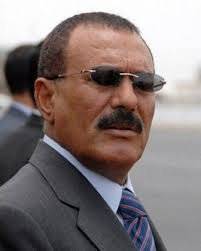 During the presidency of Saleh, North and South Yemen united into one state - the Republic of Yemen in 1990, won the civil war in the south of Yemen in 1994, for which the parliament awarded the title of Marshal to Saleh. However, in the second half of the 2000's. The situation in Yemen has escalated. The Saleh regime was hit by two strong opponents at once. On the one hand, they were radical Islamists of al Qaeda and their subordinate organizations, on the other hand, the Shiite Zaydites of the northern provinces. The Zeid tribes accused Saleh of establishing a Sunni dictatorship over the country and discriminating Shiites on religious grounds, as well as of the collaboration of the Yemeni regime with the United States of America.
During the presidency of Saleh, North and South Yemen united into one state - the Republic of Yemen in 1990, won the civil war in the south of Yemen in 1994, for which the parliament awarded the title of Marshal to Saleh. However, in the second half of the 2000's. The situation in Yemen has escalated. The Saleh regime was hit by two strong opponents at once. On the one hand, they were radical Islamists of al Qaeda and their subordinate organizations, on the other hand, the Shiite Zaydites of the northern provinces. The Zeid tribes accused Saleh of establishing a Sunni dictatorship over the country and discriminating Shiites on religious grounds, as well as of the collaboration of the Yemeni regime with the United States of America. In turn, Saleh accused the Zeidites of seeking to restore the reactionary monarchy of the Zeidit imams. The north mountainous province (governorate) of Sa'ad has become the citadel of Shiite resistance. The uprising of the Zidid tribes flared up in 2004, and in 2009-2012. entered the active phase, using the support of Iran. Only now Iran has been assisting the Zaidis, guided not by considerations of monarchist solidarity, as fifty years ago, but by virtue of the religious affinity of Iranian and Yemeni Shiites. In turn, on the side of the Saleh regime were Sunni fundamentalists, including al-Qaeda militants, who actually fought against Saleh, but decided to support him in suppressing Shiite uprisings.
"Arab Spring" 2011-2012 put a fat point in the history of the thirty-four-year reign of President Ali Abdullah Saleh. The resigned voluntarily, Saleh kept political and legal guarantees of immunity, but Saleh’s departure did not bring peace and tranquility to Yemen. Yemen, already one of the poorest countries not only of the Arab world, but of the planet as a whole, has been torn apart by a real civil war between opposing interest groups: government forces, Al-Qaida Wahhabis, northern provinces Shiites, South Yemen’s separatists hoping to revive the sovereign South Yemen statehood. Until the last days, a significant part of the territory of Yemen is not controlled by the government, located in the capital, Sana'a. In particular, a number of territories in the north of the country are under the direct control of Shiite Zaidis, which also raise social slogans, demanding from the Yemeni government support for the poor, reducing fuel and food prices.
In turn, Saudi Arabia actively supports the Sunnis, not only because of religious solidarity, but also because of the desire to artificially maintain instability in Yemen. After all, a strong Arab state with a republican form of government, populated by an ethnoculturally close population, may pose a serious danger to the Saudi monarchy. Especially considering the territorial disputes between the two states that are not settled since the independence of Yemen in 1918.
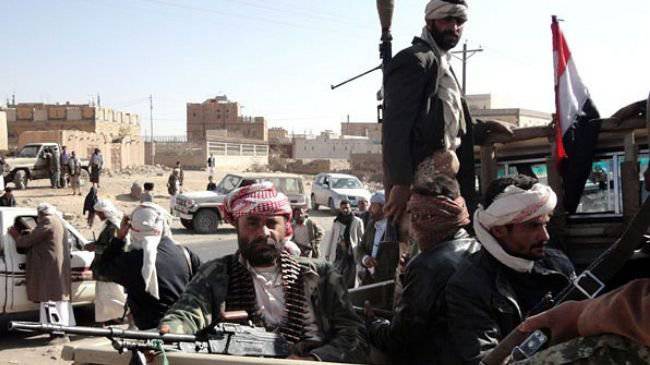
Unlike other countries of the Arabian Peninsula, which have rich oil reserves and are therefore prosperous, Yemen is the poorest country in the region. The most serious problem in Yemen, in addition to the disastrous social situation, is katovy drug addiction (according to experts, 60-70% of the country's population "sits" on the leaves of kata - a local drug) that negatively affects not only the health of the population, but also agricultural Kata plantations occupy significant areas of agriculturally suitable land. Secondly, the social deprivation of the Yemeni population against the background of high birth rates inevitably entails unemployment, aggravated by the impoverishment of a large proportion of young people against the background of drug addiction. The consequence is the spread of radical sentiment among young and middle-aged Yemenis. Serious danger to the state, whose political system is already shaky and unreliable, is also the continuing tribal division of Yemeni society. The tribal sheikhs are in fact the real masters of Yemen, controlling their fellow tribesmen. Conflicts constantly erupt between Yemeni tribes over access to drinking water sources.
All these problems in aggregate are aggravated by a very high demographic growth of the Yemeni population. Every year, the country's population is added by 3,4%. Accordingly, over the next twenty years, the population of Yemen may exceed forty million people, which will entail unpredictable consequences, since there will be no work for such a large number of citizens in Yemen (in fact, it is no longer for those who currently live in Yemen, moreover, that more than 60% of the population is younger than 25 years). Thus, the political revolution that occurred in Yemen fifty-two years ago and stopped at the very beginning, on the road to social transformation, was not able to solve the key problems of Yemeni society. The aggravation of the latter, in turn, can lead to disastrous consequences for the whole of South-West Asia.
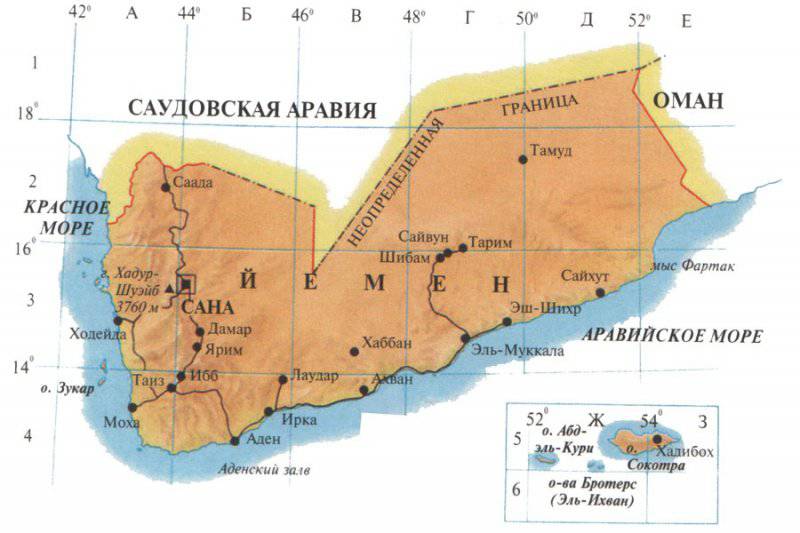
Information